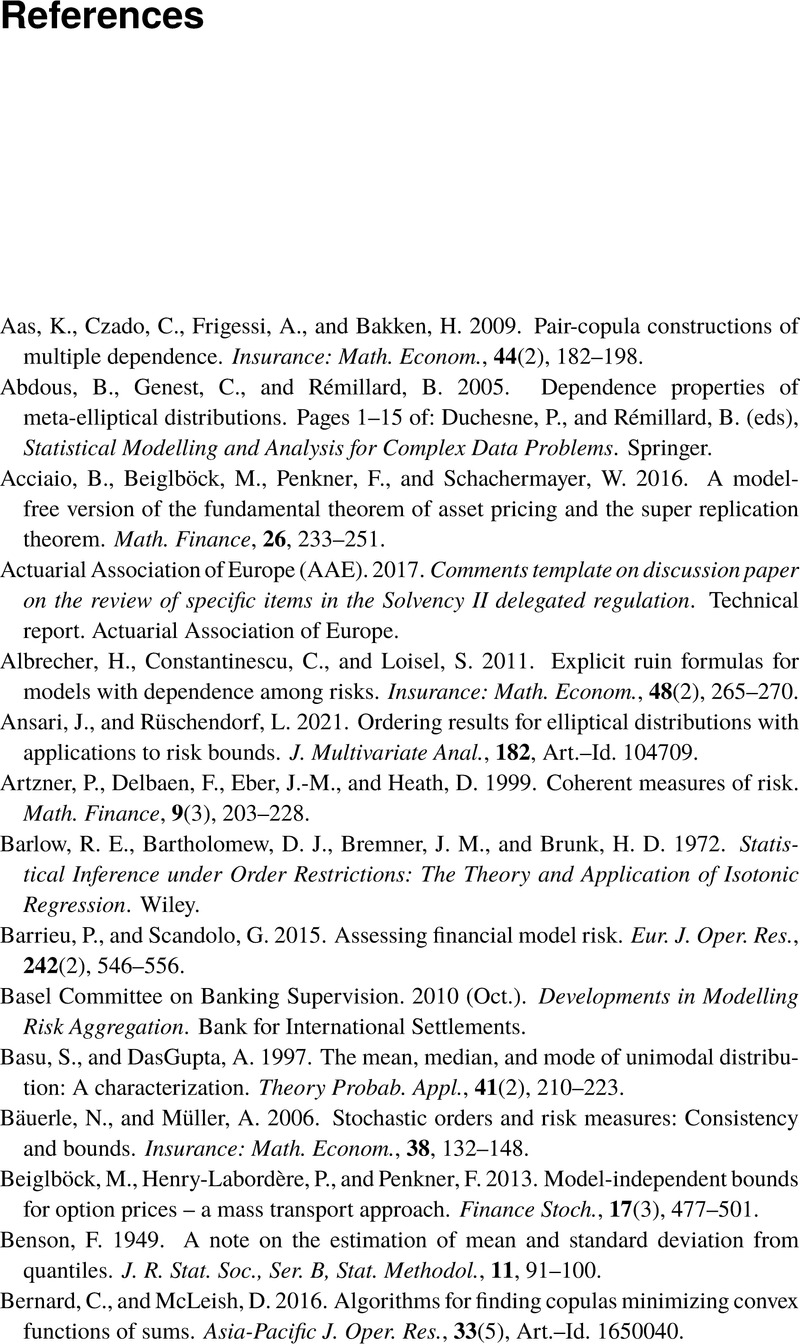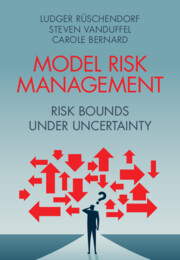Book contents
- Frontmatter
- Contents
- Preface
- Introduction
- Part I Risk Bounds for Portfolios Based on Marginal Information
- 1 Risk Bounds with Known Marginal Distributions
- 2 The Rearrangement Algorithm
- 3 Dual Bounds
- 4 Asymptotic Equivalence Results
- Part II Additional Dependence Constraints
- 5 Improved Standard Bounds
- 6 VaR Bounds with Variance Constraints
- 7 Distributions Specified on a Subset
- Part III Additional Information on the Structure
- 8 Additional Information on Functionals of the Risk Vector
- 9 Partially Specified Risk Factor Models
- 10 Models with a Specified Subgroup Structure
- Part IV Risk Bounds under Moment Information
- 11 Bounds on VaR, TVaR, and RVaR under Moment Information
- 12 Bounds for Distortion Risk Measures under Moment Information
- 13 Bounds for VaR, TVaR, and RVaR under Unimodality Constraints
- 14 Moment Bounds in Neighborhood Models
- References
- Index
- References
References
Published online by Cambridge University Press: 21 December 2023
- Frontmatter
- Contents
- Preface
- Introduction
- Part I Risk Bounds for Portfolios Based on Marginal Information
- 1 Risk Bounds with Known Marginal Distributions
- 2 The Rearrangement Algorithm
- 3 Dual Bounds
- 4 Asymptotic Equivalence Results
- Part II Additional Dependence Constraints
- 5 Improved Standard Bounds
- 6 VaR Bounds with Variance Constraints
- 7 Distributions Specified on a Subset
- Part III Additional Information on the Structure
- 8 Additional Information on Functionals of the Risk Vector
- 9 Partially Specified Risk Factor Models
- 10 Models with a Specified Subgroup Structure
- Part IV Risk Bounds under Moment Information
- 11 Bounds on VaR, TVaR, and RVaR under Moment Information
- 12 Bounds for Distortion Risk Measures under Moment Information
- 13 Bounds for VaR, TVaR, and RVaR under Unimodality Constraints
- 14 Moment Bounds in Neighborhood Models
- References
- Index
- References
Summary

- Type
- Chapter
- Information
- Model Risk ManagementRisk Bounds under Uncertainty, pp. 309 - 319Publisher: Cambridge University PressPrint publication year: 2024



